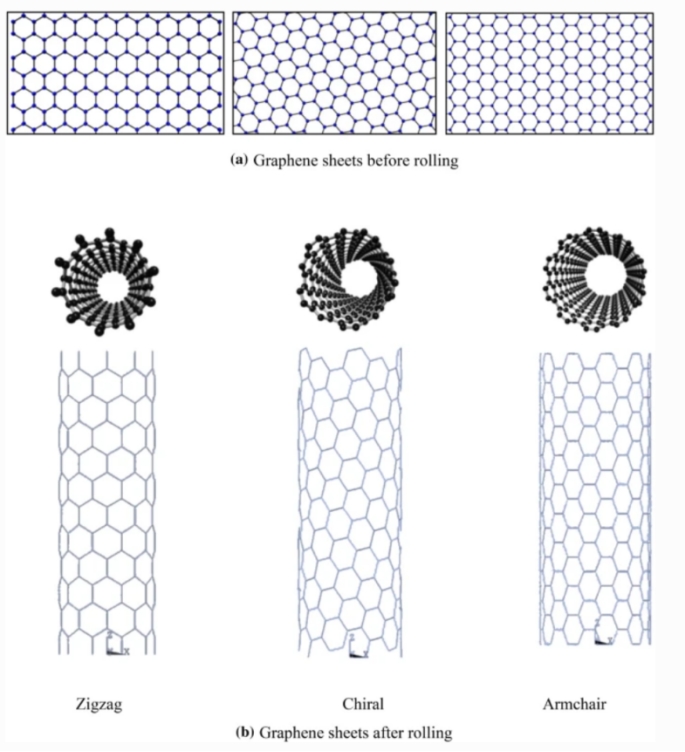CNTs possess a unique combination of high strength and ultra-light weight which makes it a promising application in nanoelectromechanical systems (NEMS) such as springs, and oscillators. These applications require a critical understanding of the torsional properties of CNTs. Carbon nanotube, which is layer of graphene sheet wrapped into cylindrical shape with a diameter about 1 nm and a length up to many micrometers, is controlled by chiral angle orientation and tube diameter. Figure.1 shows three possible orientations of CNTs structure. Figure.1(a) represents the orientation of graphene sheets before rolling, whereas Fig.1(b) shows the structure of grapheme sheet after rolling to NTs.
Singlewalled Carbon Nanotube(SWCNTs) have been the most actively studied materials in recent years due to their special nanostructure, large specific surface area, and excellent electrical properties. This multifaceted seamless one dimensional roll of a single layer of graphite (graphene) has revealed highly promising applications in future molecular electronics over the last few decades. The remarkable electronic properties of these 1-D structures make them suitable for various applications in nanotechnology, optics, electronics, and other fields of materials science as chemical sensors, actuators, nano biomaterial , conductive heating film,conductive transparent electrode, conductive nanoink, nano device, and display (backlight, flat lamp and field emitter) etc. This has invoked interest in the experimentalists as well as theoreticians. Experimentalists are trying to develop new methods of synthesizing, purifying and functionalizing SWCNTs and exploring possibilities of their use into new devices and applications. On the other hand, theoreticians are implying theory and computational modeling to determine the structural, mechanical, thermal and electronic behaviour with accuracy by using computational Nanotechnology. The simulation techniques are being used for predictions.
References: [1] Eltaher, M.A., Almalki, T.A., Almitani, K.H. et al. Modal participation of fixed–fixed single-walled carbon nanotube with vacancies. Int J Adv Struct Eng 11, 151–163 (2019). [2] R. H. Baughman, A. A. Zakhidov and W. A. De Heer, “Carbon nanotubes-the route toward applications”, Science 297(5582), 787–792 (2002). [3] https://link.springer.com/article/10.1007%2FBF03353763 [4] https://systems.enpress-publisher.com/index.php/CAN/article/view/996 |


_1.jpg)

